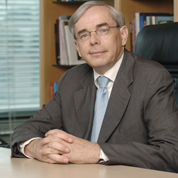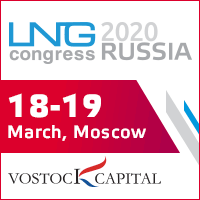EBRD marks 20th foundation anniversary with pride and enthusiasm to the future

Today, the EBRD remains the largest institutional investor in the region, while its business modus operandi and overall expertise have become a unique case study for undertaking successful investment projects in this region for other institutional and portfolio investors.
How it all began 20 years ago
Headquartered in London City, the center of global finances, in United Kingdom, the EBRD, was inaugurated in 1991 to help actively support the development of free-market economies and democracies in countries from Central Europe to Central Asia — spreading from the Baltics to Mongolia, through Central and Eastern Europe, the Balkans, the former Soviet Union, and most recently to Turkey — as they discarded the yoke of communism following the demise of the Soviet Union for capitalism and democracy in the 1990s. The bank is currently owned by 61 countries and two intergovernmental institutions.
Since it began its work in 1991, the EBRD has played a key role in the economic transformation of the region. Specifically, it has committed over 60bln euros to support the modernization of economies and the development of the private sectors in these countries. In addition, the EBRD has over this period mobilized third party-financing to facilitate overall investments worth a total of about 180 bln euros. According to its financial reports for 2010, the bank’s net profit stood at 1.4bln euros, while the number of investment projects executed during this period at a total cost of 9bln euros from the bank’s own sources stood at 386, a record figure in the institution’s 20-year history.
“The EBRD remains the largest institutional investor in a region, spreading from Central Europe to Central Asia, whose experience has become a unique case study for other investors operating in the region.”
Today, EBRD is currently involved in the execution of different investment projects in various sectors of economies in countries of its core operations. Comparatively, it needs to be noted here that Russia was and has continued to remain the largest beneficiary of EBRD’s investments, accounting for almost 40% of the bank’s total volume of operations in the region. “The EBRD remains committed to its engagement throughout the region, ready to meet continuing challenges even in the more advanced economies, some of whom were hit particularly hard during the ongoing global economic crisis,” the bank’s management said in an official statement dedicated to the anniversary programs on held on April 15.
Performance assessment by bank management
Marking the anniversary, EBRD President Thomas Mirow noted the enormous progress made over the last 20 years in this vast region, stressing that the EBRD is very happy to have contributed generously to the positive developments. “My thanks go to the bank’s founders, who had the foresight to create such a unique financial institution with such alacrity, and to the staff, both past and present, whose vigor and pioneer spirit made those investments possible, and finally to the bank’s shareholders for their continued support,” he added. “But my greatest tribute goes to the countries of the region of EBRD’s operations, which had embraced the need for change, however hard that seemed at the time and may still seem now, and whose governments and people continue to work towards a better future.”
With its investments, the EBRD has reached out to broad sections of the economies in its region, with the primary aim of promoting a sustainable market economy that can provide higher standards of living and greater prosperity. To meet this objective, it has sought to bolster financial sectors, while providing support for the development of micro-, small- and medium-sized enterprises that create employment in their localities.
By far the largest proportion of its investments have been with the private sector, but the EBRD has also made an important contribution to providing better municipal services to cities and towns throughout the region, improving transport infrastructure and other social amenities as well as raising the standards of the provision of water  and other utilities. One key strand in all EBRD investments and activities has been an emphasis on meeting the highest environmental standards and also preserving energy resources in a region, where energy waste has long been and remains an endemic problem.
and other utilities. One key strand in all EBRD investments and activities has been an emphasis on meeting the highest environmental standards and also preserving energy resources in a region, where energy waste has long been and remains an endemic problem.
Bank’s future plans
It must be noted here that 2011 is the first calendar year in the EBRD’s new five-year business development strategy approved in 2010, which envisages significantly increasing the bank’s chartered capital from 20bln euros to 30bln euros, a plan fully supported by all of its 63 shareholders.
With such level of shareholder’s trust and support backed with generous financial resources, it is, therefore, not surprising that the management noted during the official ceremony that the bank looks back with pride on its achievements, whilst looking ahead with enthusiasm to meeting future challenges both in the traditional region of its core operations and elsewhere across the globe where the bank’s unique experience and expertise will be needed.
“The bank has built up a huge reservoir of experience over the last 20 years and is also ready and able to apply its unique skills beyond its current region if requested to do so, while upholding its activities and fulfilling its commitments in its current countries of operations,” bank’s management said in an official statement.












 Web design,
Web design,